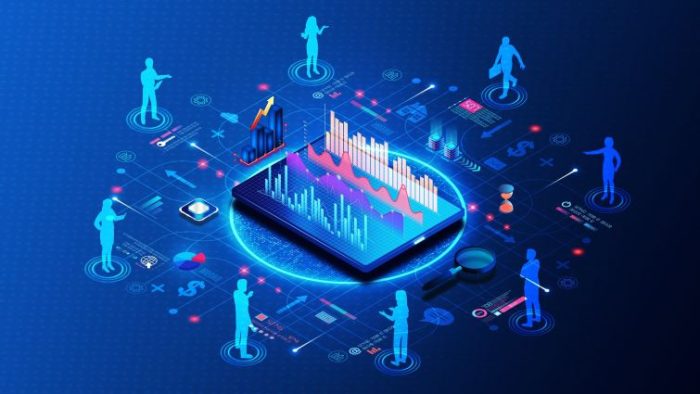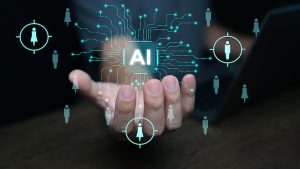The Role of HR Data Integration in Driving Strategic Talent Management
 Publié le 9 August 2024
Publié le 9 August 2024
Use the latest tech and techniques to improve the workforce by understanding the role of HR data integration in driving strategic talent management.
Talent management is one of the major cornerstones of building a successful business, and HR teams are the ones recruiting, onboarding, reviewing, scheduling, nurturing, and paying your talent.
For each of those processes, there’s probably an app. In fact, there are probably several apps all collecting data, and your HR department might be using all of them.
But this means HR data is siloed into separate, independent compartments. From personal details to payroll information to employee reviews, your HR teams are:
- Manually inputting the same data over and over again
- Switching between apps to find vital pieces of information
- Running into or even creating errors, typos, or out-of-date information
- Analyzing data from disparate sources
These issues slow down HR functions, impacting employee engagement, productivity, development, and retention.
HR data integration aims to solve this by creating a centralized database or single source of truth for HR data.
HR data integration is the process of combining all of your human resources data into one centralized system for easy access, transfer, and analysis by HR teams.
In this article, we’ll discuss the role of HR data integration in driving strategic talent management and how you can work towards integrating HR data in your business.
The issues with disparate systems in HRmanagement
Free to use image sourced from Pexels
Traditionally, employee records were stored on paper files in a cabinet somewhere. If you wanted to transfer data from one department to another, you had to hand-deliver it. If you wanted to transfer it to another branch, you’d get a courier involved.
As our business capabilities have grown, demand for better systems has increased. Whether you’re running a call centre, contact center, or SaaS company, technology has undoubtedly changed the way you operate.
Our advances in technology can be difficult to keep up with, and if you’re scratching your head trying to figure out the difference between the contact center and call center meaning, you’re not the only one!
Nevertheless, when it comes to HR, technology has improved every aspect of HR data storage, transfer, and analysis. But like those old-school methods, businesses are still up against years of legacy systems storing data in different locations where access is spotty and transfer is manual.
We get used to how things are.
If your business has a dozen apps for HR purposes, you simply deal with it. You use one app for recruitment, and then you swap over to another app to enter your new hire’s personal details, and then you swap over to another app to handle payroll, and then you… get the point.
All this multi-application data searching and manual repetitive entry wastes time. Data stuck in independent silos is difficult to manage, edit, transfer, and analyze.
HR teams risk spending more hours on data management than people management.
The era of SaaS has greatly improved HR data management, but many businesses still end up with multiple apps to handle various HR functions. This clunky data processing can slow down HR functions, affecting how your business manages its talent.
HR data integration aims to solve this by creating a centralized system containing all your HR data.
How does HR data integration work?
Before we get into how HR integration can help your business, let’s look at the technical side of things.
When you use multiple HR systems, employee data is stored in separate apps and databases across multiple formats and fields. HR data integration is the process of centralizing data input, storage, access, and transfer.
Depending on your business, its current tech infrastructure, and its unique needs, HR data integration can work in a few ways:
- HRIS
You can migrate your data from multiple apps and systems into one human resources information system (HRIS).
This requires finding a single app that does everything your business requires for its HR needs, as well as one that is committed to future improvements and integrations with other business technologies. It also requires a one-time migration process that can be long and labor-intensive.
- APIs
You can utilize integration tools like application programming interfaces (APIs) that allow different apps and systems to communicate with each other, sharing and standardizing data from disparate sources.
If you go this route, you’ll either need an IT team that can develop and maintain enterprise architecture management (EAM) and integration tools, or a third-party integration platform as a service (iPaaS) that can create customized APIs for your unique requirements.
However you choose to implement it, HR data integration allows data to be shared across departments, analyzed in a standardized format, and updated simultaneously across multiple platforms.
The role of HR data integration in strategic talent management
Free to use image sourced from Pixabay
Talent management is all about finding, acquiring, training, and nurturing the best talent. It’s about creating an employee experience that innovates and engages, right from the start.
So, how does an HR data integration solution help solve the issues created by disparate systems?
Recruitment
Talent management starts with recruitment. During recruitment, HR teams might use apps to source candidates, comb job applications for relevant keywords, evaluate potential recruits, interview, test skills, and make decisions.
Moving from one data source to another during this process can slow down recruitment. You might be letting high-quality talent slip through the cracks caused by these separate systems.
Integrated HR data gives recruiters easy access to recruitment data from one single source, cuts down on manual double-data entry, and improves HR data analytics capabilities to help recruiters make more data-driven decisions.
Onboarding
Onboarding is essential to getting new talent settled into their new roles. You need your onboarding process to be fast, streamlined, and comprehensive.
On the HR side, onboarding requires:
- Manual data entry of employee details into each HR information system
- Handing out onboarding information and resources
- Handling initial training and queries
- Organizing payroll and benefits
- Periodically reviewing new hires
- Guiding new recruits through additional professional training and development
However, the 2022 State of Employee Onboarding in the US report by LeenaAI found that a poor onboarding process can have negative effects on businesses.
40% of respondents reported a disconnect between hiring and onboarding, leading to a loss of employee engagement and higher turnover.
HR data integration can help to bridge that disconnect by:
- Sharing data between the teams responsible for recruitment and onboarding
- Creating a single instance of data entry that updates employee information across all relevant systems—personal details for records, financial data for payroll, etc.
- Eliminating the need for manual double-data entry
- Improving analytics across the onboarding process
- Freeing up HR teams from menial tasks so they can spend more time on engaging, meaningful, and personalized employee onboarding
Data analysis
HR data analysis is important for talent management.
Acquiring and retaining talent takes a holistic approach, with HR teams offering support, direction, discipline, development, and benefits.
HR data analysis can help you:
- Monitor overall workforce productivity
- Monitor an individual employee’s growth, including training and development
- Monitor PTO, sick leave, and unauthorized time off that can indicate patterns of disengagement
- Find patterns that lead to employee turnover
- Keep pay competitive to better attract and retain talent
- Monitor employee sentiment across the business
However, HR data analysis can be tricky when data is siloed into separate systems.
Different apps and databases store data in different formats. Manual double-data entry can lead to mistakes, meaning one employee’s record might differ across multiple systems. You might have typos, missing data points, or out-of-date information.
Good data analysis requires standardized data that allows for easy identification of patterns. You simply cannot achieve this with inconsistent data siloed into different apps and databases.
Manual data analysis will require extensive cleaning, imputation, and standardization—and that’s before you even get to the analysis part.
HR data integration—whether by utilizing a single HRIS, linking apps through APIs, or developing whatever unique SA (what is solution architecture?) your business requires—offers this standardization right out of the gate.
Data integrity
As we mentioned above, continuous manual data entry can create mistakes. HR teams might spend hours inputting the same data into various apps. Errors are inevitable.
This can affect HR productivity, leading to more important tasks falling by the wayside. It can also affect things like payroll and benefits, negatively impacting employee engagement and retention.
HR data integration creates a single instance of inputting data that updates across all systems.
Employee development
Talent management isn’t just about recruitment and onboarding. Creating a workplace where your employees are engaged, productive, and eager to grow is vital to your business’s success.
HR departments manage employee development through reviews, training, support, and compensation. And they do it all whilst juggling data across different systems.
Incorporating a goal tracker app can further enhance these capabilities, allowing HR teams to set, monitor, and review employee goals in real time, directly aligning with business objectives.
Integrating HR data can streamline progress monitoring and help HR teams decide when employees need extra training or development.
For example, if your five-star customer service employee suddenly starts getting negative feedback from their work in your call center, customers are likely unhappy with their service. In that case, you want to know what’s gone wrong.
HR teams can look at the data holistically to find problem areas such as a large amount of sick leave or turning down opportunities. You can help your employees get back on track much faster.
And the opposite is true. HR teams can use integrated data to find employees who are excelling in their roles and might benefit from extra development or a promotion. We all like it when our hard work is noticed, and this kind of proactive appreciation can improve employee morale across your business.
When an employee does change roles, undergoes development, or gets promoted, updating information in the system is a one-and-done task. HR data integration ensures that the employee’s details only need to be edited once for the whole system to update.
Diversity, equity, inclusion
Talent comes from every walk of life, and businesses that support diverse hiring and an inclusive workplace culture fare better than their competitors.
The World Economic Forum’s 2023 Global Party Alliance report backs this up; it found that ethnically and gender-diverse companies are 36% and 25% more likely to outperform their less diverse competitors.
Committing to DEI goals can help your business foster the best talent by taking biases out of recruitment and creating a more welcoming workplace.
But tracking those goals can be difficult without access to standardized, comprehensive data.
HR data integration solves this. A single source of centralized data lets you track employee progress, DEI targets, and the impact of DEI initiatives on the development of your diverse employees.
Streamlining HR functions
According to Zylo’s 2024 SaaS Management Index Report, even small businesses are using an average of 162 apps with an annual spend of millions.
Looking at app redundancy, the report found that businesses have, on average, 8.2 redundant recruitment apps alone.
That’s a lot of money and resources going into useless legacy apps that do nothing but silo data and create barriers to HR functions.
HR data integration helps businesses cut down on app sprawl, eliminate hours of manual data entry, avoid repetitive menial HR tasks, and free up HR teams for more important work like business performance management.
Incorporating contract management software into your integrated HR system further simplifies the management of employee agreements and legal documents. This ensures all contractual data is easily accessible and manageable from a single platform, enhancing both compliance and efficiency.
HR data integration can help you acquire, nurture, and retain talent
Free to use image sourced from Unsplash
Top talent helps your business thrive. Recruitment, onboarding, development, and compensation are essential to growing a successful business.
HR teams have a lot to juggle. An influx of technology and the era of a SaaS for everything brought exciting new HR software to the table. But, as with everything, too much of a good thing can lead to disaster.
HR teams can suffer from too many apps, siloing data into separate systems and creating barriers to data sharing, input, and analysis.
Integrating HR data can solve this by destroying those barriers. Whether you implement HR data integration through switching to a single HRIS or creating custom APIs, combining your HR data into a centralized system is becoming increasingly important to talent management.
HR data integration can:
- Free up your HR teams from manual double-data entry, human error, and chronic app-switching
- Streamline HR workflow by sharing vital personnel data across recruitment, onboarding, and development processes
- Improve HR data analysis so that HR teams can make more data-driven, informed decisions
- Free up HR teams from menial tasks so they can focus on nurturing your company’s talent towards success
Successful talent management can take your business to the next level, so give your HR teams the best chance at success by understanding the role of HR data integration in driving strategic talent management.







